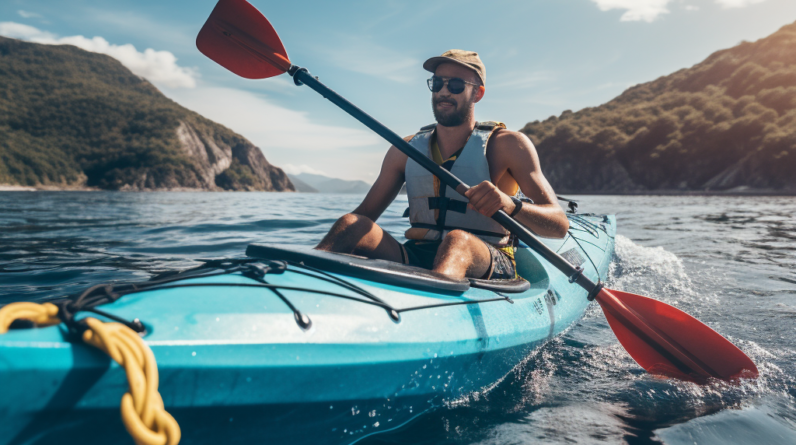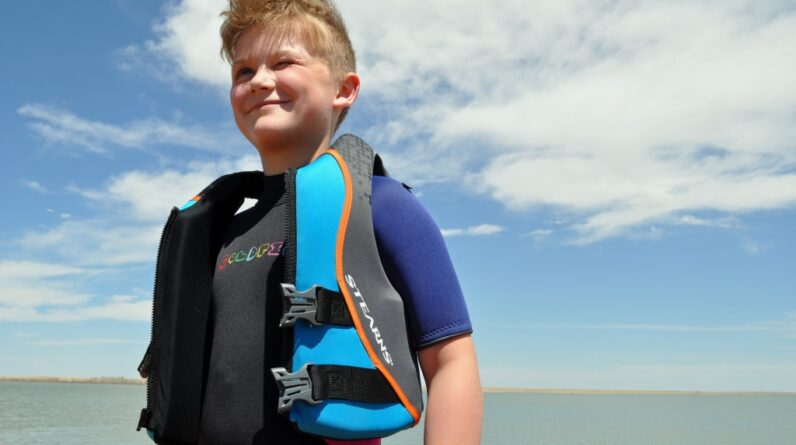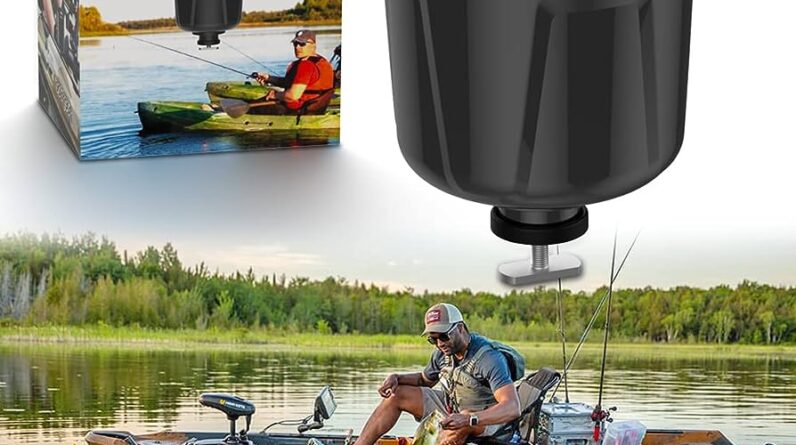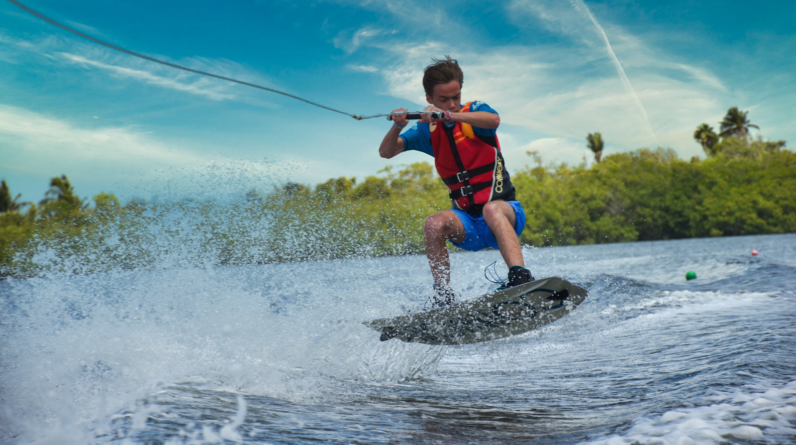
When it comes to wakeboarding on a lake, ensuring your safety is paramount. Whether you’re a beginner or an experienced rider, taking the necessary precautions can make all the difference. From wearing a life jacket to checking the weather conditions, this article explores some essential safety measures to keep in mind for a thrilling yet secure wakeboarding adventure. So, get ready to hit the water with confidence and enjoy the exhilarating experience that wakeboarding on a lake can offer!
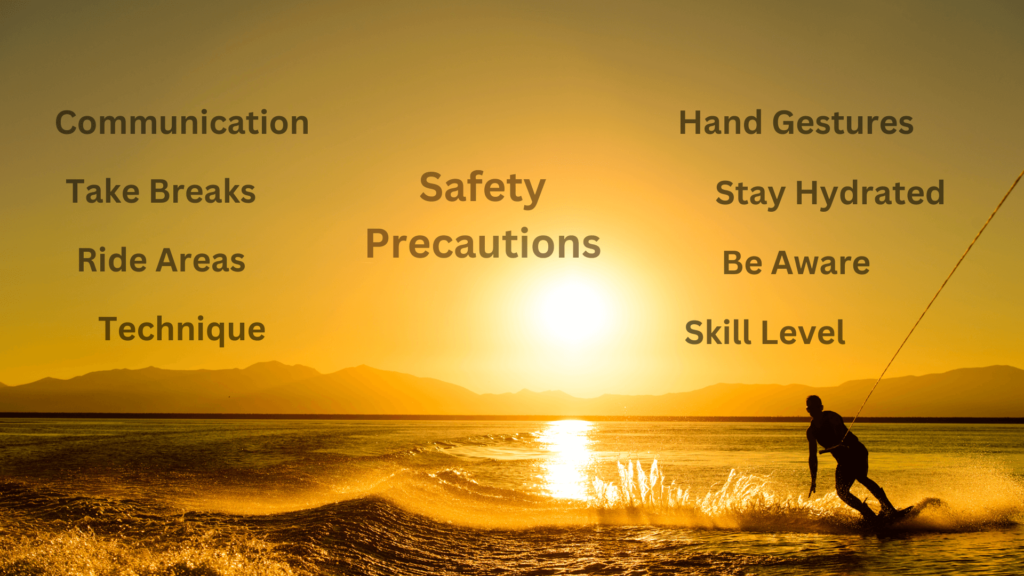
This image is property of ukwakeboarding.com.
Choosing the Right Equipment
Selecting the Wakeboard
When it comes to wakeboarding, choosing the right equipment is crucial for a safe and enjoyable experience on the lake. The first step is selecting the right wakeboard. Consider your skill level, riding style, and personal preference. Beginners may benefit from a larger and more stable board, while advanced riders may prefer a smaller, more maneuverable board. Take into account your weight and height, as these factors can affect the board’s performance. It is always a good idea to consult with an experienced wakeboarder or visit a local sporting goods store for guidance on selecting the best wakeboard for you.
Choosing the Appropriate Bindings
Equally important as choosing the right wakeboard is selecting the appropriate bindings. Bindings are the boots that attach your feet to the wakeboard, providing control and stability. It is crucial to choose bindings that fit you properly and securely. Ill-fitting bindings can result in discomfort, loss of control, and even injury. When trying on bindings, ensure they are snug but not overly tight, with enough room for your toes to wiggle. Consider the level of support and flexibility you prefer – softer bindings offer more mobility, while stiffer bindings provide greater control. Don’t hesitate to try on different brands and models to find the perfect fit for your feet.
Picking the Right Life Jacket
Safety should always be a top priority when participating in water sports. Choosing the right life jacket, or personal flotation device (PFD), is essential for your safety while wakeboarding. Make sure to select a life jacket that is Coast Guard-approved and appropriate for your weight and size. Life jackets should fit snugly without being too constricting, allowing you to move freely. It is also recommended to choose a life jacket specifically designed for wakeboarding, as they often have features such as extra buoyancy in the chest area or a harness for attaching a tow rope. Ultimately, wearing a properly fitted and quality life jacket can potentially save your life in the event of an accident.
Wearing Protective Gear
While wakeboarding is an exhilarating activity, it is important to protect yourself from potential injuries. Wearing protective gear can significantly reduce the risk of harm. Opt for a snug-fitting helmet to protect your head from impacts during falls or collisions. Additionally, consider investing in a pair of high-quality knee and elbow pads to prevent bruises and abrasions. Depending on your skill level and the speed at which you ride, a wetsuit may also be beneficial to protect you from cold water and offer some cushioning in case of impact. Always prioritize safety by wearing the appropriate protective gear for your wakeboarding session.
Ensuring Proper Boat Safety
Inspecting the Boat
Before heading out on the lake, it is essential to thoroughly inspect the boat and ensure it is in proper working condition. Check the engine, fuel levels, and any additional equipment on board. Look for any signs of damage, such as cracks or leaks. Ensure that all safety equipment, such as fire extinguishers and life jackets, are present and in good working order. If you are unsure about any aspect of the boat’s functionality, it is advisable to seek the assistance of a professional or experienced boater for a thorough inspection.
Checking the Propeller
One crucial aspect of boat safety that often goes overlooked is checking the propeller. Ensure that the propeller is tightly secured and free from any damage or debris. A loose or damaged propeller can be a significant hazard, not only to wakeboarders but also to swimmers and other boaters. Regularly inspect the propeller before each wakeboarding session and address any issues promptly. Never operate a boat with a damaged or improperly functioning propeller.
Maintaining a Safe Distance from the Boat
When wakeboarding, it is vital to maintain a safe distance from the boat. As a general rule, the recommended distance between the wakeboarder and the boat should be at least 50 feet. This distance allows the wakeboarder to safely maneuver around the wake without risking collision with the boat. Deviating from this distance can increase the risk of accidents and injuries. Additionally, make sure to communicate with the boat driver to establish guidelines and ensure both parties are on the same page regarding how close or far apart you should be.
Knowing the Hand Signals
Clear communication between the wakeboarder and boat driver is essential for a safe and enjoyable wakeboarding experience. Familiarize yourself with the hand signals commonly used in wakeboarding, as they serve as a means of communication between you and the boat driver. For instance, a thumbs-up signal indicates you are ready to start, while a thumbs-down signal indicates you want to slow down or stop. Other signals may include pointing left or right to indicate the desired direction or using a horizontal waving motion to express the need for a wider turn. Understanding and effectively using hand signals will help ensure clear communication and minimize the risk of accidents.
Preparing the Environment
Checking Weather Conditions
Before embarking on a wakeboarding adventure, it is crucial to check the weather conditions. Make sure to review the local weather forecast and pay attention to any warnings or advisories. Avoid going wakeboarding during severe weather conditions, such as thunderstorms or strong winds, as these can pose significant risks. Even if the weather seems calm, be aware that it can change quickly on the water, so it is important to remain vigilant. Always prioritize your safety and plan your wakeboarding sessions around favorable weather conditions.
Scanning for Potential Hazards
When wakeboarding on a lake, it is essential to scan the surroundings for potential hazards. Take a moment to survey the area and identify any objects that could pose a danger, such as rocks, buoys, or submerged logs. Stay away from shallow areas, as running aground can cause injury and damage to both you and the boat. Additionally, be mindful of other watercraft, swimmers, and wildlife in the vicinity. By regularly scanning for potential hazards, you can better anticipate and avoid dangerous situations while wakeboarding.
Avoiding High-Traffic Areas
To ensure a safe wakeboarding experience, it is advisable to avoid high-traffic areas on the lake. These areas, such as boat ramps, crowded beaches, or busy marinas, can increase the risk of collisions and accidents. Wakeboarding in less crowded areas allows for better visibility and reduces the chances of encountering other watercraft at high speeds. Always respect other lake users and choose a location where you can safely enjoy your wakeboarding session without endangering yourself or others.
Determining the Water Depth
Knowing the water depth is essential for both safety and performance while wakeboarding. Shallow water can lead to injuries caused by hitting the lake bottom, while excessively deep water can make it difficult to maintain control and navigate through the wake. Before starting your wakeboarding session, determine the water depth in the area. Keep in mind that the depth may vary, so it is advisable to scope out the location and get a sense of the overall water depth. By choosing an appropriate water depth for your skill level and riding style, you can minimize the risk of accidents and maximize your wakeboarding experience.
Warm-Up and Stretching
Performing Warm-Up Exercises
Before diving into your wakeboarding session, take the time to perform warm-up exercises. Wakeboarding engages various muscle groups, and warming up properly can help prevent strains and other injuries. Incorporate exercises that increase your heart rate, such as jumping jacks or jogging, to get your blood flowing. Follow up with dynamic stretches, like leg swings and arm circles, to warm up the major muscle groups you will be using during wakeboarding. Performing these warm-up exercises will help prepare your body for the physical demands of wakeboarding and reduce the risk of muscle soreness or injuries.
Stretching Major Muscles
To further prepare your body for wakeboarding, it is essential to stretch the major muscles used during the activity. Focus on stretching your legs, core muscles, and upper body. For your legs, perform calf stretches, hamstring stretches, and quad stretches. To stretch your core muscles, incorporate exercises like trunk rotations and side bends. For your upper body, perform shoulder and arm stretches. Hold each stretch for 20 to 30 seconds and repeat on both sides. Stretching improves flexibility, enhances performance, and reduces the risk of muscle strains and injuries during wakeboarding.
Improving Agility and Balance
Agility and balance are key components of successful wakeboarding. Incorporating exercises that target these areas can significantly improve your wakeboarding skills and safety. Exercises such as lateral lunges, single-leg squats, and balance board training can enhance your agility and balance. These exercises challenge your body’s coordination and stability, allowing you to maintain control while navigating through the wake or executing tricks. By incorporating agility and balance exercises into your regular workout routine, you can enhance your wakeboarding performance and reduce the risk of falls and injuries.
Increasing Flexibility
Flexibility plays an important role in wakeboarding, allowing you to move more fluidly and maintain control during maneuvers. Incorporating stretching exercises that promote flexibility into your routine can greatly benefit your wakeboarding performance. Focus on stretching your hip flexors, glutes, and back muscles. Exercises like hip flexor stretches, butterfly stretches, and spinal twists can help improve your flexibility. Regularly stretching these areas can enhance your range of motion, making it easier to execute tricks and transitions while wakeboarding. Remember to breathe deeply and never force a stretch beyond your comfort level.
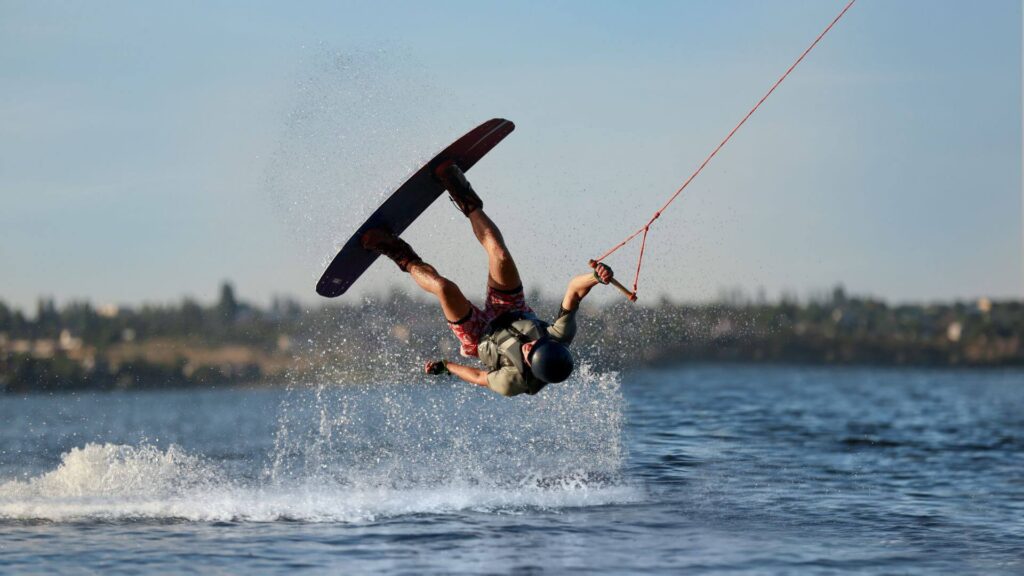
This image is property of ukwakeboarding.com.
Learning Proper Technique
Mastering the Start
The start is a crucial moment in wakeboarding, and mastering the proper technique is essential for a successful ride. Begin by sitting in the water with both feet in the bindings, holding onto the handle attached to the tow rope. Signal to the boat driver that you are ready by giving a thumbs-up. As the boat starts to accelerate, use your legs to push yourself up, keeping your weight centered. As you rise out of the water, slightly bend your knees and maintain a strong grip on the handle. Practice this technique until you feel comfortable and confident in executing a smooth start.
Maintaining Control and Balance
Maintaining control and balance while wakeboarding is key to a safe and enjoyable experience. Proper body position and weight distribution are essential for staying balanced on the board. Keep your knees slightly bent, with most of your weight centered over the board. Avoid leaning too far back or forward, as this can throw off your balance and increase the risk of falling. Use your core muscles to help stabilize your body and maintain control. By practicing and focusing on your body position and weight distribution, you can improve your balance and increase your overall control while wakeboarding.
Navigating through the Wake
Once you have mastered the start and maintain control, it’s time to learn how to navigate through the wake. As you approach the wake, slightly increase your speed and prepare to jump by bending your knees. As you reach the edge of the wake, push upward explosively, extending your legs and using your arms to lift you off the water. Keep your eyes focused on the horizon and stay balanced in the air. Land with your knees slightly bent to absorb the impact and smoothly transition into your next maneuver. Practicing jumping the wake will enhance your wakeboarding skills and allow you to execute more advanced tricks in the future.
Executing Tricks and Jumps
As you become more comfortable and confident in your wakeboarding abilities, you may want to explore executing tricks and jumps. It is important to approach tricks and jumps gradually, starting with basic maneuvers and progressing to more complex ones over time. Practice on flat water before attempting tricks and jumps on the wake. Focus on learning proper technique and gradually increase the difficulty level. Always prioritize safety and be mindful of your skill level. If you are unsure about attempting a trick or jump, it is best to seek guidance from an experienced wakeboarder or instructor.
Communicating Effectively
Establishing Communication Signals
Effective communication between the wakeboarder and the boat driver is crucial for ensuring a safe and enjoyable wakeboarding experience. Establish clear communication signals before starting your session. Agree on specific hand signals or verbal cues that both parties understand. Common signals include a thumbs-up to indicate readiness, a thumbs-down to signal a desire to slow down or stop, and pointing left or right to indicate the desired direction. Consistent and reliable communication will help both the wakeboarder and the boat driver stay informed and make quick adjustments as needed.
Using a Spotter
Having a spotter on the boat is highly recommended for wakeboarding safety. The spotter’s role is to keep a close eye on the wakeboarder and ensure their well-being. The spotter should have a clear view of the wakeboarder at all times and be ready to alert the boat driver of any potential issues or concerns. This includes notifying the driver if the wakeboarder falls or signals for assistance. With a spotter on board, the wakeboarder can have peace of mind knowing there is an extra set of eyes looking out for their safety.
Maintaining Eye Contact with the Boat Driver
While wakeboarding, it is important to maintain eye contact with the boat driver whenever possible. Eye contact helps establish a stronger connection and allows for immediate communication, especially in situations where hand signals may not be practical or visible. By maintaining eye contact, the wakeboarder and the boat driver can quickly assess each other’s intentions and adjust their actions accordingly. This visual connection is particularly useful when navigating through the wake or executing complex maneuvers. Remember to always prioritize safety and keep your attention focused on the task at hand.
Understanding Hand Signals
In addition to verbal communication and eye contact, understanding hand signals is crucial for effective communication while wakeboarding. Hand signals provide a non-verbal means of communication between the wakeboarder and the boat driver, particularly in situations where distance or noise may hinder verbal communication. Familiarize yourself with common hand signals used in wakeboarding, such as thumbs-up, thumbs-down, pointing left or right, and a horizontal waving motion to indicate a wider turn. Understanding and effectively using these hand signals will help maintain clear and concise communication, enhancing safety on the water.
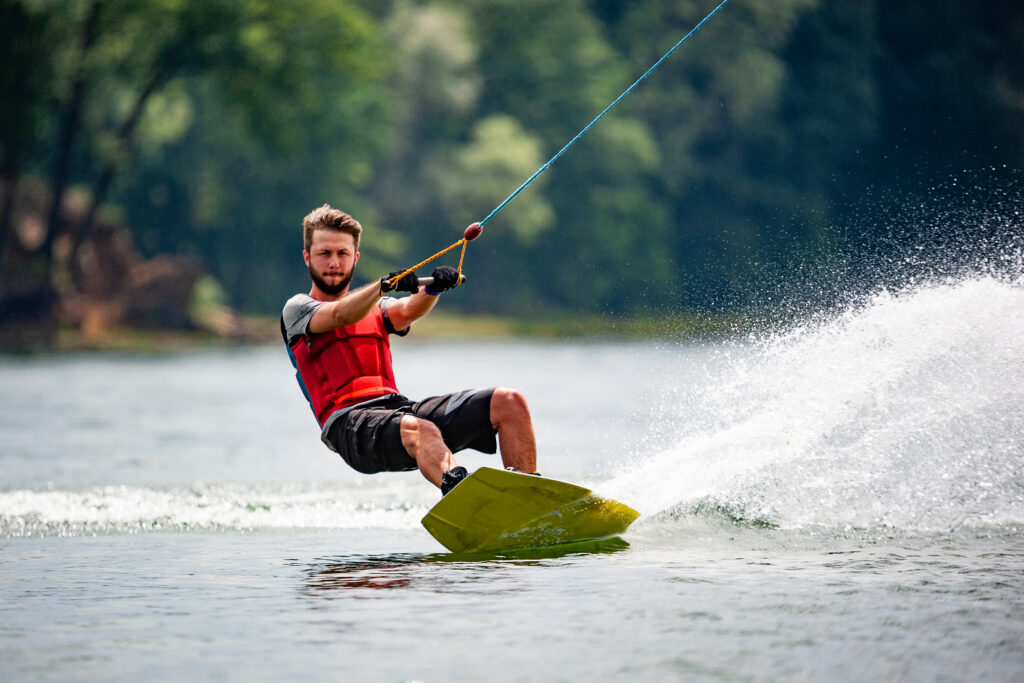
This image is property of www.deputyandmizell.com.
Safety Guidelines for Falls
Falling with Awareness
Falling is an inevitable part of wakeboarding. However, knowing how to fall safely can significantly reduce the risk of injuries. If you feel yourself losing control or about to fall, try to maintain your body’s position as upright as possible. Aim to fall away from the wakeboard to avoid potential collisions. As you hit the water, keep your arms close to your body and relax to absorb the impact. Try to fall with awareness, ensuring your head remains above water at all times. By falling with awareness, you can minimize the risk of injury and quickly regain control to resume your wakeboarding session.
Avoiding Submerged Objects
One potential hazard for wakeboarders is submerged objects. Rocks, logs, or other debris hidden beneath the water’s surface can pose a significant risk if encountered during a fall. To avoid such hazards, be aware of your surroundings when falling and try to steer clear of areas that may be more likely to contain submerged objects. Maintaining a safe distance from the shoreline and staying in areas with sufficient water depth can greatly reduce the chances of coming into contact with submerged objects. Remember to always remain vigilant and alert to potential hazards, even during falls.
Clearing the Area Quickly
After falling, it is important to clear the area quickly to avoid potential collisions with other wakeboarders, boat traffic, or hazards in the water. Prioritize your safety by moving to a safe distance from where you fell. Swim to the side of the wakeboarding area or to a designated safe zone where you are least likely to be in the way of other wakeboarders or boats. Clearing the area promptly not only ensures your safety but also allows others to continue their activities without interruption or potential risks. Always be aware of your surroundings and take the necessary steps to clear the area swiftly after a fall.
Signal for Assistance
In certain situations, it may be necessary to signal for assistance after falling. This could be due to injury, equipment failure, or being unable to swim to safety on your own. If you require assistance, raise your arm above your head, waving it back and forth to attract attention. This universal distress signal will alert those around you that you are in need of help. It is essential to remain calm and wait for assistance to avoid further injury or potential danger. By signaling for assistance when necessary, you can ensure your safety and receive the help you need in a timely manner.
Respecting Other Lake Users
Maintaining a Safe Distance
Respecting other lake users is crucial for a harmonious and safe wakeboarding experience. One way to show respect is by maintaining a safe distance from other watercraft, including boats, jet skis, and other wakeboarders. Avoid getting too close to other riders or passing dangerously close to their wake. By keeping a safe distance, you reduce the risk of collisions and potential accidents. Always be aware of your surroundings and exercise caution when sharing the lake with other users.
Being Mindful of Swimmers
As a wakeboarder, it is important to be mindful of swimmers in the area. Swimmers have the right of way, and wakeboarders should always proceed with caution when approaching or passing swimmers. Keep a safe distance from swimmers and be aware of any signs or markers indicating designated swim areas. Avoid performing tricks or jumps near swimmers to minimize the risk of accidental collisions. By being respectful and mindful of swimmers, you contribute to a safer and more enjoyable environment for everyone on the lake.
Yielding to Other Boats
While wakeboarding, it is essential to yield to other boats on the lake. Boats generally have less maneuverability than wakeboards and may require more time and space to adjust their course. When approaching other boats, always yield the right of way and give them ample space to pass. Avoid crossing directly in front of boats or cutting them off, as this can create dangerous situations. Show courtesy and respect to other boaters by yielding and maintaining a safe distance at all times. By prioritizing safety and mutual respect, you can contribute to a positive wakeboarding experience for everyone.
Limiting Noise and Disturbance
Respecting other lake users also means being mindful of noise and disturbance. Wakeboarding can be an exhilarating and noisy activity, but it is important to consider the impact on others enjoying the peacefulness of the lake. Avoid unnecessary revving of the boat’s engine or excessive noise from playing loud music. Be aware of noise restrictions in the area and adhere to local regulations. By limiting noise and disturbance, you help create a more enjoyable and harmonious environment for all lake users.

This image is property of ukwakeboarding.com.
Maintaining Hydration and Energy
Drinking Sufficient Water
Staying hydrated is essential for your overall well-being and performance while wakeboarding. Spend long hours in the sun and the physical exertion involved in wakeboarding can lead to dehydration. Make sure to drink sufficient amounts of water before, during, and after your wakeboarding sessions. Carry a water bottle with you on the boat and sip regularly to stay hydrated. Proper hydration not only helps maintain your energy levels but also helps regulate body temperature and prevent heat-related illnesses. Make it a priority to drink water and keep your body hydrated to enjoy a safe and enjoyable wakeboarding experience.
Avoiding Alcohol and Drugs
Participating in wakeboarding while under the influence of alcohol or drugs is extremely dangerous and should never be considered. Alcohol and drugs impair judgment, coordination, and reaction times, increasing the risk of accidents and injuries. Wakeboarding requires focus, coordination, and quick reflexes, all of which can be compromised when under the influence. It is vital to make responsible choices and prioritize your safety and the safety of others by avoiding alcohol and drugs before and during wakeboarding sessions.
Consuming Balanced Snacks
Maintaining your energy levels during wakeboarding is crucial for your safety and performance. Fuel your body with balanced snacks that provide sustained energy throughout your session. Opt for snacks that contain a combination of carbohydrates, protein, and healthy fats. Pack snacks such as energy bars, trail mix, or fruit and nut combinations. Avoid heavy or greasy foods that may cause discomfort or sluggishness. By consuming balanced snacks, you can replenish energy stores and sustain your endurance while wakeboarding.
Taking Breaks
While the thrill of wakeboarding may tempt you to keep going non-stop, it is important to listen to your body and take regular breaks. Wakeboarding is physically demanding and can lead to fatigue and decreased performance if you do not allow yourself sufficient rest periods. Take short breaks at intervals throughout your session to rest, hydrate, and recharge. Use this time to stretch, chat with fellow wakeboarders, and assess your energy levels. By taking breaks, you can prevent exhaustion and ensure you remain alert and in control throughout your wakeboarding session.
Understanding Emergency Procedures
Knowing Basic First Aid
Understanding basic first aid can be invaluable in the event of an accident or injury while wakeboarding. Familiarize yourself with common injuries that can occur, such as sprains, strains, or cuts. Learn how to properly administer first aid for these injuries, including immobilizing sprained joints, applying pressure to control bleeding, and cleaning and dressing wounds. Carry a basic first aid kit on the boat and ensure it is well-stocked with necessary supplies. Additionally, consider taking a first aid course to gain more extensive knowledge and skills. By knowing basic first aid, you can potentially minimize the impact of an injury and provide immediate assistance when needed.
Recognizing the Drowning Risks
While wakeboarding, it is essential to be aware of the drowning risks associated with water sports. Drowning can occur quickly and quietly, making it imperative to recognize and respond to signs of distress in the water. Keep a close eye on fellow wakeboarders and be prepared to assist if someone is struggling in the water. Familiarize yourself with the signs of drowning, such as gasping for air, inability to speak or make noise, or a panicked expression. If you suspect someone is drowning, immediately alert the boat driver and provide assistance in a safe manner. Understanding drowning risks and being prepared to respond can make a significant difference in ensuring the safety of yourself and others.
Using Rescue and Recovery Equipment
In the event of an emergency or accident while wakeboarding, it is important to have access to appropriate rescue and recovery equipment. Familiarize yourself with the equipment on board, such as life rings, rescue lines, or floating devices, and know how to properly use them if the need arises. Ensure that the equipment is in good condition and readily accessible. Having the necessary rescue and recovery equipment can significantly aid in the prompt and safe assistance of individuals in distress on the water.
Contacting Emergency Services
In situations where immediate medical attention or assistance is required, it is essential to contact emergency services promptly. Program the local emergency services number into your phone and have it readily accessible. If you witness or are involved in a serious accident or injury, do not hesitate to call for help. Provide clear and concise information about the location and nature of the emergency. Stay on the line until instructed otherwise and follow any instructions provided by emergency services. Remember, swift and effective communication with emergency services can be vital in ensuring timely and appropriate assistance.
By following these safety precautions and guidelines, you can enjoy a fun and safe wakeboarding experience on the lake. Always prioritize your safety and the safety of others, maintain proper equipment and boat safety, stay aware of your surroundings, and communicate effectively. With the right preparation and approach, wakeboarding can be an exhilarating water sport while still ensuring a friendly and supportive environment for everyone enjoying the lake. Now get out on the water, have fun, and stay safe!

This image is property of www.econolift.com.

